Help us keep OnCuba alive here
This July 1st Cuba officially opened its first hotels to international tourism. It did so only in keys adjacent to the island after three months of closure due to the coronavirus pandemic, without clear indications of its possible convocation and short-term economic success, and with the imperative to apply strict hygiene and safety measures to prevent new outbreaks that would represent a reversal in today’s controlled epidemiological scenario of the country.
The decision, announced days ago by the Ministry of Tourism (MINTUR), only foresees the arrival of foreign visitors to Cayo Coco, Cayo Guillermo, Cayo Cruz, Cayo Santa María and Cayo Largo―the first four located in the northern keys of the center of the island, and the last one, in the south of western Cuba―, from which for the time being tourists will not be able to leave. Meanwhile, other hotel and non-hotel facilities have already opened their doors to the national market, as part of the beginning of the post-COVID-19 stage.
Cuba to open to foreign tourism on July 1, but only in its keys
The first phase of the de-escalation, which has already ended in most of the Cuban provinces and which Havana entered this Friday, seeks to be the first step towards a gradual and highly complex recovery, both due to the global impact of the pandemic and the difficulties and burdens typical of the Cuban economic scenario in which tourism has a fundamental weight.
After an unfortunate 2019, in which the island’s tourism industry went from an initial forecast of more than 5 million visitors to not reaching 4.3 million―which represented a decrease of 9.25%―, due to events such as the U.S. government prohibition of cruises and restriction of flights to Cuba, MINTUR had bet on a discreet growth of its operations in 2020. The goal was to reach 4.5 million tourists and partially recover its finances affected by the previous year’s decline, promoting emerging markets such as the Russian and Chinese, and trying to maintain or recover the shares of traditional markets such as Canada and European countries.
And then, COVID-19 arrived
The pandemic froze tourist activity in the world and suddenly deprived Cuba of one of its main sources of income―the second, according to published figures, behind the sale of professional services abroad, and responsible for 10% of the GDP and half a million jobs―by causing the cancellation of numerous reservations, the closure of hotels and the hasty departure of many tourists―more than 70,000 in ten days, according to official data―after the first cases were reported in March―precisely foreign visitors―and the Cuban authorities’ decision to close the country’s borders.
Miles de turistas salen de Cuba por medidas frente a la COVID-19
This is why it is not surprising that since the start of the post-COVID-19 stage was announced, tourism has had the sights set by many from inside and outside the island. Or, even long before, because, even in a commercial pause, the sector did not stay with its arms crossed and practically from the start of its forced stand by began to prepare for the return. Despite the closure of the borders―whose opening, foreseen for the third phase of the de-escalation, still has no definite date―some facilities remained with stranded tourists, foreign businessmen and health personnel, or functioned as isolation centers. In addition, investments did not stop, the closure of many hotels was used to work on their improvement and maintenance, advertising campaigns were redesigned and sanitary protocols for the restart of activities were prepared.
The challenge for the Cuban tourism sector is, then, to balance economy and health; try to make up for a clearly nefarious year and contribute as much as possible to the diminished state coffers, at times when many doors remain closed. But, at the same time, doing so without jeopardizing Cuba’s achievements in the control of the disease and seeking to highlight, along with its attractions and traditional values, new values based on the hygiene and safety of its destinations, which in the opinion of experts will gain greater relevance in the reconfiguration of the smokeless industry during the post-pandemic.
Playas de Varadero reabiertas al público desde este miércoles
Phases and protocols
Like the rest of the social and economic activities, Cuban tourism has its own de-escalation strategy. It was prepared by MINTUR following the phases established for the post-COVID-19 stage on the island and the recommendations of the health authorities. In a recent television appearance, Minister of Tourism Juan Carlos García Granda commented that the protocols developed seek to guarantee guests’ safety and enjoyment, and are in accordance with the indications issued by the World Health Organization, the World Tourism Organization and were advised and approved by the Cuban Ministry of Public Health.
As is already known, the establishment of the different phases is carried out gradually and asymmetrically, depending on the epidemiological situation of each Cuban province. The first of them began last June 18 and ended this Thursday in almost the entire island, except in Havana and Matanzas―which joined days later―and in the specific case of tourism, it contemplates opening only to the national market, which includes not only part of the hotel network but also the camping bases distributed throughout the country.
To start operating, all facilities must obtain a sanitary certification that certifies their safety and, once opened, maintain 24-hour clinical-epidemiological surveillance, with the presence of medical personnel and a hygiene specialist. Another key to its operation is to ensure physical distancing between guests and workers. In the case of hotels, these operate with all their services and their occupation is dependent on their own conditions, while camping bases operate at a maximum of 60% of their capacity. As for non-hotel services and nightclubs located in hotels, what is established is an occupation of between 30 and 50%.
The protocol followed in this phase also contemplates the screening and daily measurement of body temperature for workers and guests, the mandatory disinfection of hands, surfaces, premises, equipment and means of transportation used―in the latter, the use of the facemask or disposable mask will be mandatory; the use of elevators and pools only at 50% of their capacity; the organization of services in swimming pools, restaurants and other common areas to guarantee physical distancing; and the removal of materials and objects which cannot be disinfected, such as magazines and pamphlets.
Likewise, people, and in particular workers with respiratory symptoms, will not be allowed to enter the facilities and those who present them will be referred to a health center. Employees also have the responsibility to declare if they detect the presence of any person who is ill or suspected of being ill, and to use the facemask in risk areas. In addition, the MINTUR established a distance of at least 1.0 meter for all tasks and where the use of protection means is not possible, delimitation barriers between tourists and workers must be used, or the processes should be redesigned, with emphasis on their digitization.
The arrival of the first foreign tourists, like the one that was supposed to start this Wednesday, was scheduled for a second moment of the de-escalation. In it, as is already mentioned at the beginning of the work, the beginning of operations is limited to Cayo Largo, Cayo Coco, Cayo Guillermo, Cayo Cruz and Cayo Santa María, and tourists will be isolated from the island’s other territories and population. Therefore, they will only be able to circulate inside the key where they vacation and car rentals, excursions and nautical activities will also be limited to this place. Sailing to Cuba is still prohibited.
Visitors, who will arrive on charter flights to the tourist destinations’ respective airports, will undergo a PCR test with a view to detecting the possible presence of the SARS-CoV-2 coronavirus, and in the event that any of them present symptoms during their stay, they will be isolated in premises established for this within the hotels. Likewise, the facilities will maintain medical attention and constant clinical-epidemiological surveillance of guests and workers, as well as the remaining health and safety measures established for national tourism.
However, the measures published by the MINTUR do not specify what would happen to those visitors who test positive for the virus and their contacts, although presumably they would be treated and hospitalized―at least, initially―on the island, following the same protocol of hospitalization and treatment that has already been applied to foreign visitors who were detected with the disease in the country before the suspension of flights and tourist operations.
As for the workers of these hotels, a residence regime was established within the tourist destination and a mandatory quarantine of seven days after their leave. At the end of the surveillance period, a rapid test should be made. Those who cannot comply with the conditions of this work system will have the same job treatment they had during the pandemic, which, without a doubt, although it would guarantee them certain rights, would have a negative impact on their pockets.
For the third phase, the start of which is very difficult to predict today amidst the expansive global pandemic scenario, the Cuban government has planned to open all its destinations to international tourism. Also, the reestablishment of circuits, although with limitations on the maximum number of customers, and the maintenance of hygiene and safety measures implemented from the first phase, including sanitary certification of facilities, medical care and permanent clinical-epidemiological surveillance, and the establishment in hotels of isolation conditions for tourists with respiratory symptoms.
At this point, the country’s borders would already be open, so, in theory at least, many visitors would arrive in Cuba on their own, would tour the island according to their own plans, and not just previously contracted tour packages, they would stay in private homes―as of the first phase, private landlords can host national tourists, but not foreigners―and they would exchange, without great restrictions, with the Cuban population, for which control at the border and respect for the measures established at a social level and not only the sanitary protocols of the hotels would gain prominence to avoid them becoming a source of new outbreaks.
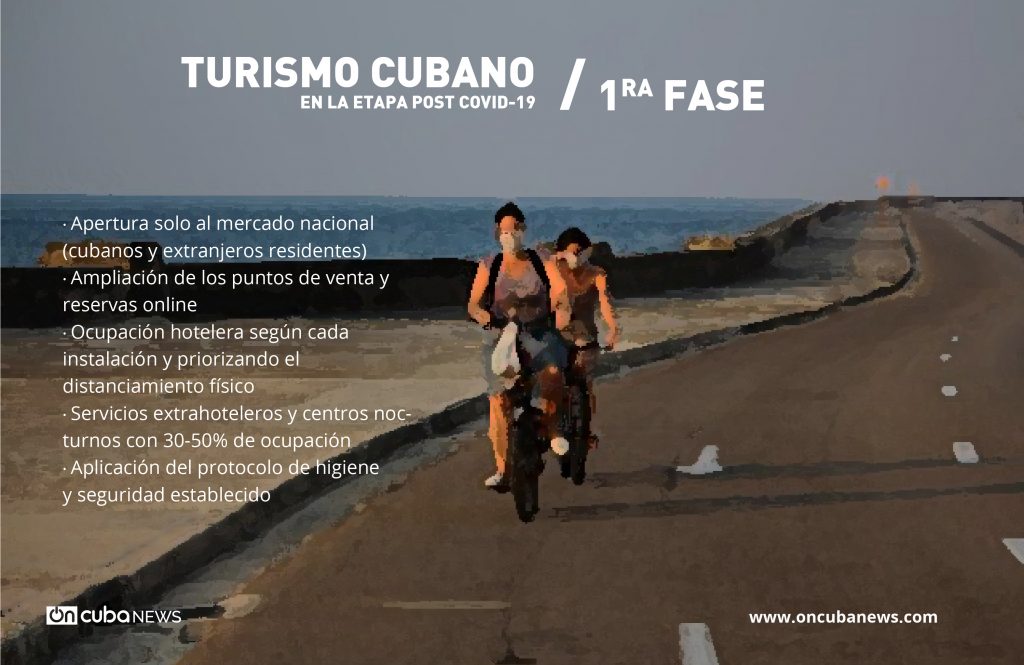 *Caption:
*Caption:
CUBAN TOURISM / 1ST PHASE
IN POST-COVID-19 STAGE
- Opening only for national market (Cubans and foreign residents)
- Expansion of points of sale and online bookings
- Hotel occupancy according to each facility and prioritizing physical distancing
- Non-hotel services and night spots with 30-50% occupancy
- Application of the established hygiene and safety protocol
*Caption:
CUBAN TOURISM / 2ND PHASE
IN POST-COVID-19 STAGE
- Opening to international tourism only on Cuba’s keys (Cayo Largo, Cayo Coco, Cayo Guillermo, Cayo Cruz and Cayo Santa María)
- Tourists’ isolation from rest of the Cuban territories and population
- Car rental, nautical activities and excursions, only on the keys
- Ban on sailing around Cuba
- Application of the established hygiene and safety protocol
*Caption:
CUBAN TOURISM / 3RD PHASE
IN POST-COVID-19 STAGE
- Opening of all destinations for international tourism
- Reestablishment of circuits, with limitations in the maximum number of customers
- Conditions of isolation in hotels for foreign tourists with respiratory symptoms
- Maintaining hygiene and safety measures implemented since the first phase
Outside and inside
Based on the guidelines established by the MINTUR and the Cuban government, the country’s hotel groups (Gran Caribe, Islazul, Gaviota, Cubanacán) and foreign chains such as Meliá, have already been announcing their own measures, opening of facilities, bookings and advertising campaigns, which emphasize safety as the value of their offers―“Yours and Safe,” for example, is the name of the Cubanacán group’s campaign, presented last week to the press―and seek to make up for lost time and earnings as much as possible. However, for now the outlook is uncertain, at least as far as international tourism is concerned.
https://www.facebook.com/CubanacanHoteles/posts/2005929939537596
Cuba’s main tourist source markets―Canada, Russia, Europe―remain closed or with strong restrictions for their travelers, and what could happen in the coming months remains uncertain. The economist and expert on tourism issues José Luis Perelló, in statements to the AP press agency, considered that this July 1’s opening is rather “a sign” by Cuba for potential and future customers, and not a possibility of real short-term recovery. “The first thing you need to know is who is willing to go sightseeing this year.”
For its part, Sunwing, Canada’s largest travel provider, affirmed they had “no immediate plans to start operating flights to Cuba,” but that it hoped “that the restrictions will soon begin to ease.” Meanwhile, a Cuban press report acknowledged this Wednesday that “travel agencies and tour operators still lack concrete information on the first flights to the island for foreigners,” although it stated that “at the time they stated they had received several interests regarding this issue from all over the world.”
What happens from now on can be seen then as a kind of rehearsal, a gradual set-up facing perhaps the peak season, which usually begins in November―coinciding with the winter months in the northern hemisphere, where the bulk of the tourists that usually visit Cuba live―or, even, 2021, depending on how the pandemic and the economy evolve. The Cuban authorities have not even ruled out intermediate steps within the de-escalation, such as a gradual reopening to the foreign market of Varadero beach resort, already open to national tourists, always depending on possible demand and establishing a geographic segmentation in the destination, to avoid contact between Cuban and foreign visitors before the third phase is officially decreed.
Already in that phase, with the reopening of the borders and the restart of international flights, Cubans residing outside the island must also begin to arrive, a sector not negligible not only for its social but also economic impact, which in 2019 added almost 624,000 visits to Cuba, of them, more than 552,000 from the United States. And although they stay mainly with family and rental houses, they also make hotel reservations for themselves and/or their families, go on excursions, rent cars, go to nightclubs, restaurants and swimming pools, and hire other non-hotel services.
However, the fact that this climactic moment of the de-escalation does not have a clear date for now and that the complex epidemiological situation in the United States, where most of the Cuban emigrants live and travel from, greatly complicates any forecast in the short or medium term, conspires against their possible contribution. Also the fact that, even if the flights from the United States are finally authorized by Havana, the flow would no longer approach that of last year, not only due to the forced interruption by the coronavirus, but also due to the prohibitions and cuts established by Washington for air operations to the island.
In any case, for Cuba’s tourism it is a chimera to try to approach the figures forecast for this year―the MINTUR has not even ventured to launch a new forecast―and the drop in foreign visitors and the consequent income they generate―some 4 billion dollars between the state and private sectors, according to unofficial estimates―could be fatal for the island’s economy.
The other side of the coin is national tourism. Although it does not have―at least not yet―the potential to revitalize the sector and multiply its profits on the same level as foreign visitors, the domestic market has been growing in recent years and in 2020 it could have an even greater weight. According to official figures, in 2018 there were more than 1.6 million national tourists, which meant an increase of 23.4% compared to 2017; while last summer the increase was 15% in hotels in CUC (Cuban convertible pesos), according to the then head of the sector, Manuel Marrero, today the country’s prime minister.
It is difficult to know if this figure could be equaled or exceeded this year, taking into account the economic contraction that affects not only the state coffers but also personal pockets―for not a few Cuban families, surely today it is much more of a priority to get the few and highly demanded food products and toiletries than to go to a hotel for their vacation ―and the logical limitations that, even in de-escalation, the COVID-19 entails. However, the MINTUR did not hesitate to quickly target this market sector as soon as the progressive return to normality was announced and, together with the more than 70 camping bases opened in the first phase, the different chains have started promoting hotels and other services for Cubans.
To the reservation offices of the chains themselves and tour operators such as Havanatur, Cubatur and Ecotur, which according to the authorities of the sector have been increased―including mobile points of sale―to distribute the influx of customers, online booking has also increased through the agencies’ websites and the Transfermóvil application, whose use by Cubans, both to pay for electricity and to buy a product from virtual stores, has grown in recent times along with the increase in connectivity on the island. The online variant also includes the possibility of reservations from abroad, made in dollars, euros or other currencies, by family or friends of the vacationers.
For now, according to some press reports and comments from managers of the chains themselves, demand by the domestic market is marching at a good pace. In the eastern province of Holguín, for example, where the much-liked Guardalavaca beach resort is located, requests have been above the available reservations―around 60% of hotel capacity―, according to Maikel Robert, marketing specialist from the MINTUR Territorial Delegation, quoted by Prensa Latina news agency.
CUBAN TOURISM /HYGIENE AND SAFETY PROTOCOL FOR NATIONAL TOURISM
IN POST-COVID-19 STAGE
- Sanitary certification of tourist facilities
- Round the clock clinical-epidemiological surveillance in hotels
- Presence of medical personnel in hotels and camping bases
- Daily taking of body temperature of workers and customers
- Ban on entrance of workers with respiratory symptoms
- Mandatory disinfection of hands, surfaces and transport
- Use of elevators and swimming pools only at 50% capacity
- Physical distancing in swimming pools, restaurants and common areas
- Use of facemask in transportation means and risk areas
- Withdrawal of materials and objects that can’t be disinfected
*Caption:
CUBAN TOURISM / HYGIENE AND SAFETY PROTOCOL FOR NATIONAL TOURISM
IN POST-COVID-19 STAGE
- PCR test for tourists on their arrival in Cuba
- Isolation conditions for tourists with respiratory symptoms
- Residence regimen in tourist destination for workers
- Mandatory seven-day quarantine and a rapid test for workers who go on leave
- Round-the-clock surveillance, as well as the rest of the established measures for national tourism
Similar news comes from other Cuban provinces and, although official figures and forecasts have not yet been released, presumably this trend should continue. This presumption is based, among other factors, on the recent reopening of Varadero, one of the destinations preferred by the island’s inhabitants, at the beginning of the summer months―traditionally those with the national market’s highest demand―and in the beginning in Havana of the first phase of the post-COVID-19 stage, which would not only allow the entry into operation of tourist facilities in the capital but also the making of reservations by Havanans, undoubtedly due to their number and average purchasing power, one of the key groups for national tourism.
It remains then to wait for the advance of the current tourist season in Cuba, its possible figures distributed between the domestic market and international visitors, the application of its phases and steps for de-escalation and the effectiveness of its sanitary protocols to prevent new outbreaks of COVID-19 on the island. The Cuban smokeless industry has already started its engines, but in the very complex current context, this is not enough. It is not enough for the locomotive to start running; customers are also needed as well as preserving health and safety to reach a good destination.

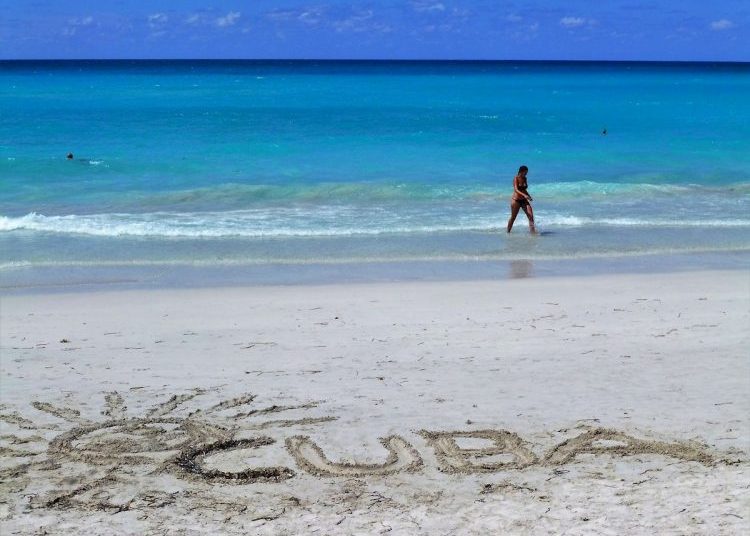




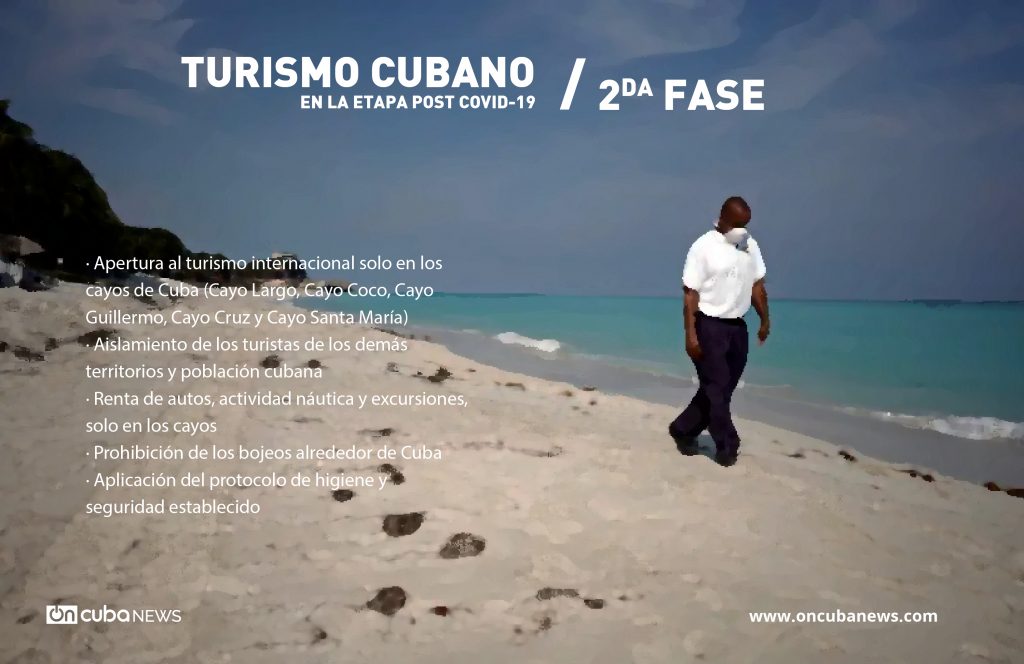
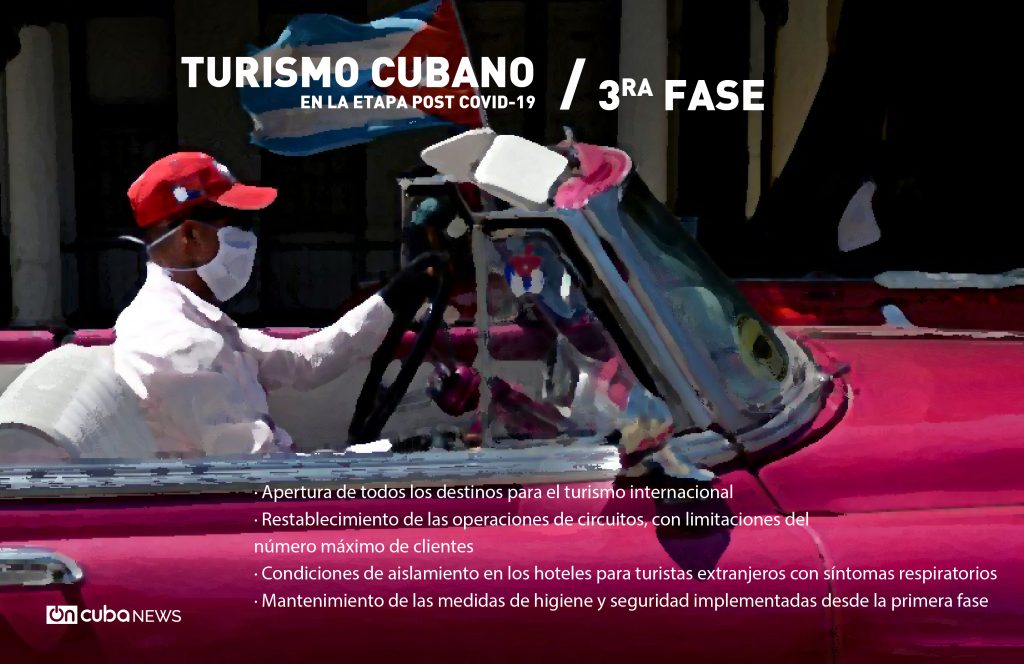
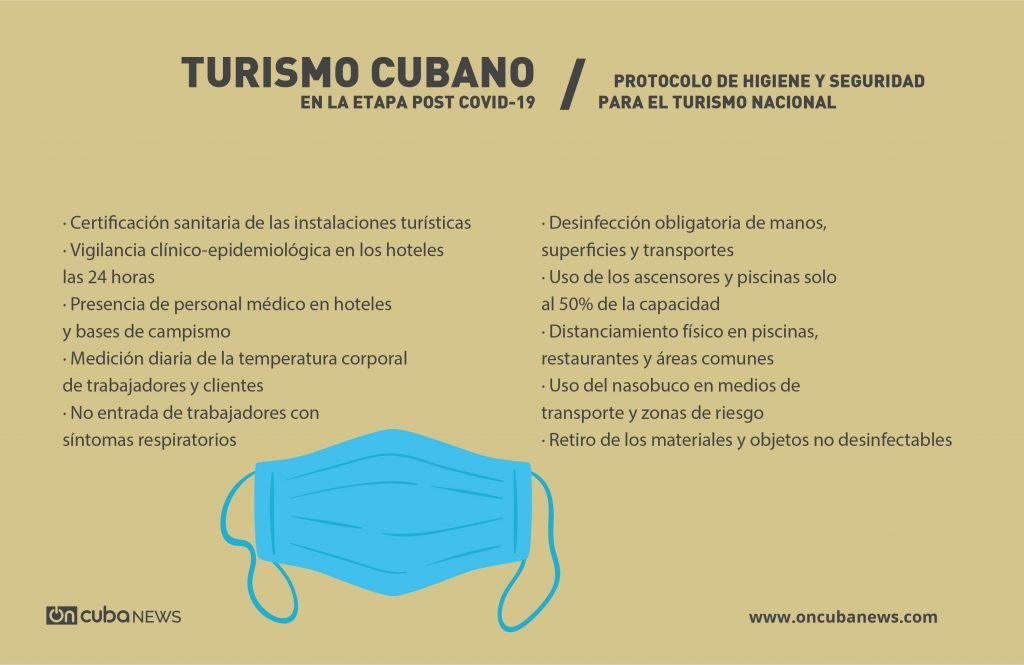
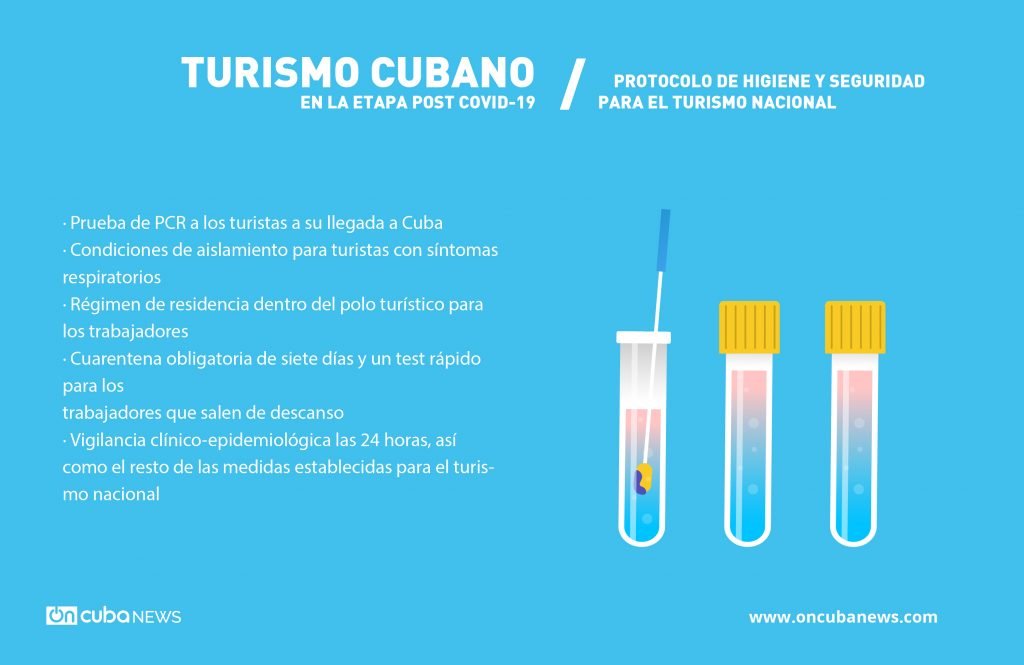





Thank you for the excellent information and clarification in your article on Tourism in Cuba As a Canadian citizen with vaccination documentation, one can imagine how excited I am to return to Cayo Largo Cuba . My last visit was so wonderful and I eagerly await to return. I would appreciate if Mintur or your organization would send me information when a return trip to Cayo largo is possible according to the phase 3 protocols. Again, your article was extremely well organized, presented, and written !!!!